 W
WThe Administrative Adjudication of Road Traffic Offences Act, 1998 is an act of the Parliament of South Africa which introduces a points demerit system for violations of traffic law. It is managed by the Road Traffic Management Corporation (RTMC), a public entity under the Department of Transport. Although the act was enacted in 1998, it has not yet been fully implemented, but has now been rescheduled for a national rollout to the whole country early in 2012.
 W
WAn advisory speed limit is a speed recommendation by a governing body, used when it may be non-obvious to the driver that the safe speed is below the legal speed. It is a posting which either approximates the Basic Speed Law or rule or is based on a maximum g-force exerted at a specific speed. Advisory speed limits are often set in areas with many pedestrians, such as in city centers and outside schools, and on difficult stretches of roads, such as on tight corners or through roadworks. While travelling above the advisory speed limit is not illegal per se, it may be negligence per se and liability for any collisions that occur as a result of traveling above the limit can be placed partially or entirely on the person exceeding the advisory speed limit.
 W
WAn all-way stop – also known as a four-way stop – is a traffic management system which requires vehicles on all the approaches to a road intersection to stop at the intersection before proceeding through it. Designed for use at low traffic-volume locations, the arrangement is common in the United States, Canada, South Africa, Liberia, and Mexico, as well as in a number of, usually rural, locations in Australia where visibility on the junction approaches is particularly poor. The stop signs at such intersections may be supplemented with additional plates stating the number of approaches.
 W
WThe Anti-Distracted Driving Act (ADDA), officially designated as Republic Act No. 10913, is a Philippine law that prohibits distracted driving by restricting and penalizing the use of mobile phones and other electronics devices while driving on any public thoroughfare, highway, or street in the Philippines. The republic act defines "distracted driving" as "using mobile communications device to write, send, or read a text-based communication or to make or receive calls" or "using an electronic entertainment or computing device to play games, watch movies, surf the internet, compose messages, read e-books, perform calculations, and other similar acts" while behind the wheel of a moving vehicle or while temporarily stopped at a red light. The law covers all private and public vehicles, including agricultural machines, construction equipments, public utility buses and jeepneys, taxicabs, motorcycles, tricycles, pedicabs, kuligligs and carriages.
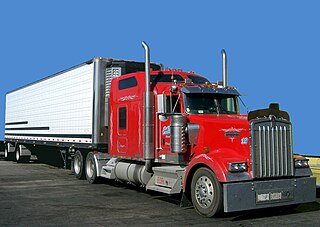 W
WA commercial driver's license (CDL) is a driver's license required to operate large, heavy, or placarded hazardous material vehicles in commerce.
 W
WDagen H, today usually called "Högertrafikomläggningen", was the day on 3 September 1967, in which the traffic in Sweden switched from driving on the left-hand side of the road to the right. The "H" stands for "Högertrafik", the Swedish word for "right traffic". It was by far the largest logistical event in Sweden's history.
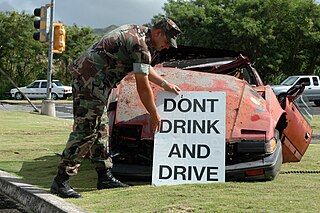 W
WDriving under the influence (DUI) is the offense of driving, operating, or being in control of a vehicle while impaired by alcohol or drugs, to a level that renders the driver incapable of operating a motor vehicle safely.
 W
W"Driving while black" (DWB) is a sardonic description of racial profiling of African-American motor vehicle drivers. It implies that a motorist may be stopped by a police officer largely because of racial bias rather than any apparent violation of traffic law.
 W
WThe European driving licence is a driving licence issued by the member states of the European Economic Area (EEA); all 27 EU member states and three EFTA member states; Iceland, Liechtenstein and Norway, which give shared features the various driving licence styles formerly in use. It is credit card-style with a photograph and a microchip. They were introduced to replace the 110 different plastic and paper driving licences of the 300 million drivers in the EEA. The main objective of the licence is to reduce the risk of fraud.
 W
WA fire lane is a pavement reserved for fire and rescue services. Dedicated fire lanes primarily appear in urban areas where traffic jams may slow their passage, thus causing an unfavorable delay in responding to distress calls. Other fire lanes, such as in outdoor parking lots in front of buildings, are open to other vehicular traffic, but serve the purpose of ensuring fire trucks’ maneuverability.
 W
WA HAWK beacon is a traffic control device used to stop road traffic and allow pedestrians to cross safely. It is officially known as a Pedestrian Hybrid Beacon (PHB). The purpose of a HAWK beacon is to allow protected pedestrian crossings, stopping road traffic only as needed. Where standard traffic signal 'warrants' prevent the installation of standard three-color traffic signals, the HAWK beacon provides an alternative.
 W
WA hook turn is a road cycling maneuver or a motor vehicle traffic-control mechanism in which vehicles that would normally turn from the innermost lane of an intersection instead turn from the outermost lane, across all other lanes of traffic.
 W
WThe Idaho stop law is the common name for a law that allows cyclists to treat a stop sign as a yield sign, and a red light as a stop sign. It first became law in Idaho in 1982, but was not adopted elsewhere until Delaware adopted a limited stop-as-yield law, the "Delaware Yield", in 2017. Arkansas was the second state to legalize both stop-as-yield and red light-as-stop in April 2019. Studies in Delaware and Idaho have shown significant decreases in crashes at stop-controlled intersections.
 W
WAn international driving permit (IDP), often (incorrectly) referred to as an international driving licence (IDL), is a translation of a domestic driver licence that allows the holder to drive a private motor vehicle in any country or jurisdiction that recognises the document. The term International Driving Permit was first mentioned in the document prescribed in the International Convention relative to Motor Traffic that was signed at Paris in 1926.
 W
WThe Kōreisha mark is a statutory sign that is set up in the Road Traffic Law of Japan to indicate "aged person at the wheel". Its official name is "aged driver sign" .
 W
WLeft-hand traffic (LHT) and right-hand traffic (RHT) are the practices, in bidirectional traffic, of keeping to the left side or to the right side of the road, respectively. They are fundamental to traffic flow, and are sometimes referred to as the rule of the road. The terms right- and left-hand drive refer to the position of the driver and the steering wheel in the vehicle and are the reverse of the terms right- and left-hand traffic. The rule also extends to where on the road a vehicle is to be driven, if there is room for more than one vehicle in the one direction, as well as the side on which the vehicle in the rear overtakes the one in the front. For example, a driver in a LHT country would overtake on the right of the vehicle being overtaken.
 W
WIn the United Kingdom, there is a legally enforced lighting-up time, defined as from half an hour after sunset to half an hour before sunrise, during which all motor vehicles on unlit public roads must use their headlights.
 W
WThe use of traffic lights to control the movement of traffic differs regionally and internationally in certain respects. This article describes some of these non-universal features. Note that the color phase commonly known as "yellow" is often referred to, especially in official usage, as "amber"; for consistency this article uses "yellow" throughout.
 W
WIn Germany, a medical-psychological assessment is used by the authorities in deciding whether to revoke or reissue a driving licence. Medical-psychological assessment has been shown to be highly effective at reducing the recidivism rate for drink drivers. Drivers who are identified as potentially unfit may have their driver's license suspended and must satisfactorily complete an MPU to get their license reinstated. MPUs are commonly required due to drug- and alcohol-related offenses, or any other offenses that demonstrate a potential lack of maturity and judgment to safely participate in traffic.
 W
WThe Metropolitan Streets Act 1867 was an Act of the Parliament of the United Kingdom applying to the City of London and all places and parishes then within the jurisdiction of the Metropolitan Board of Works. Following public meetings and press criticism of the original Act's likely effect on street traders' livelihoods, the Metropolitan Streets Act Amendment Act 1867 was granted royal assent on 7 December the same year. No effects from either Act still remain outstanding.
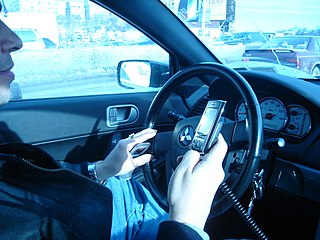 W
WMobile phone use while driving is common but it is widely considered dangerous due to its potential for causing distracted driving and crashes. Due to the number of crashes that are related to conducting calls on a phone and texting while driving, some jurisdictions have made the use of calling on a phone while driving illegal. Many jurisdictions have enacted laws to ban handheld mobile phone use. Nevertheless, many jurisdictions allow use of a hands-free device. Driving while using a hands-free device is not safer than using a handheld phone to conduct calls, as concluded by case-crossover studies, epidemiological, simulation, and meta-analysis. In some cases restrictions are directed only at minors, those who are newly qualified license holders, or to drivers in school zones. In addition to voice calling, activities such as texting while driving, web browsing, playing video games, or phone use in general can also increase the risk of a crash.
 W
WThe National Network is a network of approved state highways and interstates for commercial truck drivers in the United States. The Surface Transportation Assistance Act of 1982 authorized the establishment of a national network of highways designated for use by large trucks. On these highways, Federal width and length limits apply. The National Network (NN) includes almost all of the Interstate Highway System and other, specified non-Interstate highways. The network comprises more than 200,000 miles (320,000 km) of highways.
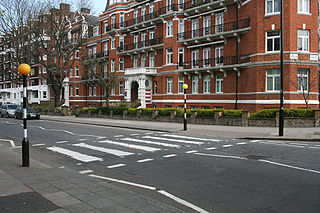 W
WA pedestrian crossing or crosswalk is a place designated for pedestrians to cross a road, street or avenue. The term "pedestrian crossing" is also used in some international treaties that pertain to road traffic and road signs, such as the Vienna Convention on Road Traffic and the Vienna Convention on Road Signs and Signals.
 W
WA pedestrian scramble, also known as scramble intersection and scramble corner (Canada), 'X' Crossing (UK), diagonal crossing (US), scramble crossing (Japan), exclusive pedestrian interval, or Barnes Dance, is a type of traffic signal movement that temporarily stops all vehicular traffic, thereby allowing pedestrians to cross an intersection in every direction, including diagonally, at the same time.
 W
WPoliScan speed is a system for traffic enforcement made by Vitronic. The measurement is based on lidar. By time-of-flight measurement, a scanning laser determines speeds and positions of all vehicles in the measurement area.
 W
WA radar detector is an electronic device used by motorists to detect if their speed is being monitored by police or law enforcement using a radar gun. Most radar detectors are used so the driver can reduce the car's speed before being ticketed for speeding. In general sense, only emitting technologies, like doppler RADAR, or LIDAR can be detected. Visual speed estimating techniques, like ANPR or VASCAR can not be detected in daytime, but technically vulnerable to detection at night, when IR spotlight is used. There are no reports that piezo sensors can be detected. LIDAR devices require an optical-band sensor, although many modern detectors include LIDAR sensors. Most of today's radar detectors detect signals across a variety of wavelength bands: usually X, K, and Ka. In Europe the Ku band is common as well. The past success of radar detectors was based on the fact that radio-wave beam can not be narrow-enough, so the detector usually senses stray and scattered radiation, giving the driver time to slow down. Based on a focused laser-beam, LIDAR technology does not suffer this shortcoming; however it requires precise aiming. Modern police radars incorporate formidable computing power, producing a minimum number of ultra-short pulses, reusing wide beams for multi-target measurement, which renders most detectors useless. But, mobile Internet allows GPS navigation devices to map police radar locations in real-time. These devices are also often called "radar detectors", while not necessary carrying an RF sensor.
 W
WA radar speed gun is a device used to measure the speed of moving objects. It is used in law-enforcement to measure the speed of moving vehicles and is often used in professional spectator sport, for things such as the measurement of bowling speeds in cricket, speed of pitched baseballs, and speed of tennis serves.
 W
WIn United States law, reckless driving is a major moving traffic violation that generally consists in driving a vehicle with willful or wanton disregard for the safety of persons or property. It is usually a more serious offense than careless driving, improper driving, or driving without due care and attention and is often punishable by fines, imprisonment, or driver's license suspension or revocation. In Commonwealth countries, the offense of dangerous driving applies.
 W
WTraffic lights, traffic signals, stoplights or robots are signalling devices positioned at road intersections, pedestrian crossings, and other locations to control flows of traffic.
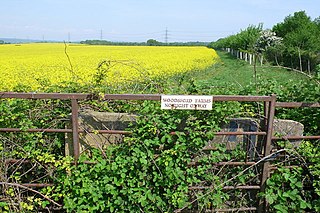 W
WRight of way is "the legal right, established by usage or grant, to pass along a specific route through grounds or property belonging to another", or "a path or thoroughfare subject to such a right". A similar right of access also exists on land held by a government, lands that are typically called public land, state land, or Crown land. When one person owns a piece of land that is bordered on all sides by lands owned by others, an easement may exist, or be created so as to initiate a right of way through the bordering land.
 W
WA turn on red is a principle of law permitting vehicles at a traffic light showing a red signal to turn into the direction of traffic nearer to them when the way is clear, without having to wait for a green signal.
 W
WRoad signs in Switzerland and Liechtenstein generally conform to the 1968 Vienna Convention on Road Signs and Signals.
 W
WWith 139,000 km of public roads, the Netherlands has one of the most dense road networks in the world – much denser than Germany and France, but still not as dense as Belgium. Dutch roads include at least 3,530 km of motorways and expressways, and with a motorway density of 64 kilometres per 1,000 km2, the country also has one of the densest motorway networks in the world. The Netherlands' main highway net (hoofdwegennet), comparable to Britains net of trunk roads, consists of most of its 5,200 km of national roads, supplemented with the most prominent provincial roads. Although only about 2,500 km of roads are fully constructed to motorway standards, much of the remainder are also expressways for fast motor vehicles only.
 W
WSchool bus stop laws are laws dictating what a motorist must do in the vicinity of a bus stop being used by a school bus or other bus, coach or minibus providing school transport.
 W
WA school zone refers to an area on a street near a school or near a crosswalk leading to a school that has a likely presence of younger pedestrians. School zones generally have a reduced speed limit during certain hours.
 W
WScott's Law, 625 ILCS 5/11-907(c), is a mandatory move over law in the state of Illinois. The law requires that all motorists move over when encountering stopped or disabled vehicles displaying warning lights. The law is used to prosecute a failure to give ample care to stopped vehicles, including not reducing speed, changing lanes, or using caution, and can be a compounding offense on roadway incidents with such a vehicle.
 W
WThe shoshinsha mark (初心者マーク) or Wakaba mark (若葉マーク), officially Beginner Drivers' Sign , is a green and yellow V-shaped symbol that new drivers in Japan must display at the designated places at the front and the rear of their cars for one year after they obtain a standard driver's license. Drivers who consider themselves beginners may continue to display the sign, even after the period of a year. Like the orange and yellow "fukushi mark" or "koreisha mark" that denotes elderly drivers, the shoshinsha mark is designed to warn other drivers that the marked driver is not very skilled, either due to inexperience or old age.
 W
WSkye's Law is an informal name for the Crimes Amendment Act 2010 of New South Wales, Australia. It is named after the 19-month old toddler Skye Sassine, who was killed on 31 December 2009 when her family's car was hit by a driver suspected of armed robbery who was trying to evade police. The driver in that case was convicted of her manslaughter, but Skye's Law makes evading a police pursuit a specific offence in itself, with prison terms of up to three years, or up to five years for repeat offences. There was also criticism of the role of Police in pursuit. Deputy Coroner, Magistrate Paul MacMahon, was quoted as saying, "The evidence shows that Senior Constable [Troy] Skinner in firstly undertaking urgent duty and subsequently engaging in the pursuit on 31 December 2009, did so in utter disregard for the requirements imposed on him by the [safe driving policy]".
 W
WSpeed limits are used in most countries to set the legal maximum, middle or minimum speed at which vehicles may travel on a given stretch of road. Speed limits are generally indicated on a traffic sign reflecting the maximum, middle or minimum permitted expressed as kilometres per hour (km/h) and/or miles per hour (mph). Speed limits are commonly set by the legislative bodies of national or provincial governments and enforced by national or regional police and judicial authorities. Speed limits may also be variable, or in some places nonexistent, such as on most of the Autobahn in Germany.
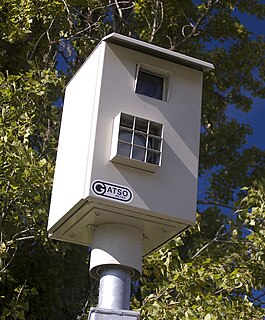 W
WSpeed limit enforcement is the effort made by appropriately empowered authorities to improve driver compliance with speed limits. Methods used include roadside speed traps set up and operated by the police and automated roadside 'speed camera' systems, which may incorporate the use of an automatic number plate recognition system. Traditionally, police officers used stopwatches to measure the time taken for a vehicle to cover a known distance. More recently, radar guns and automated in-vehicle systems have come into use.
 W
WA road speed limit is the limit of speed allowed by law for road vehicles, usually the maximum speed allowed. Occasionally, there is a minimum speed limit. Advisory speed limit also exist. Speed limits are commonly set by the legislative bodies of national or local governments.
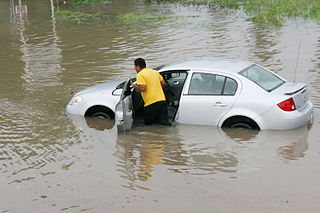 W
WThe "stupid motorist law" is a law in the U.S. state of Arizona that states that any motorist who becomes stranded after driving around barricades to enter a flooded stretch of roadway may be charged for the cost of their rescue. The law corresponds to section 28-910 of the Arizona Revised Statutes.
 W
WThe switch to right-hand traffic in Czechoslovakia was a change in the rule of the road in 1938–1939.
 W
WA tachograph is a device fitted to a vehicle that automatically records its speed and distance, together with the driver's activity selected from a choice of modes. The drive mode is activated automatically when the vehicle is in motion, and modern tachograph heads usually default to the other work mode upon coming to rest. The rest and availability modes can be manually selected by the driver whilst stationary.
 W
WTraffic on roads consists of road users including pedestrians, ridden or herded animals, vehicles, streetcars, buses and other conveyances, either singly or together, while using the public way for purposes of travel.
 W
WA traffic enforcement camera is a camera which may be mounted beside or over a road or installed in an enforcement vehicle to detect motoring offenses, including speeding, vehicles going through a red traffic light, vehicles going through a toll booth without paying, unauthorized use of a bus lane, or for recording vehicles inside a congestion charge area. It may be linked to an automated ticketing system.
 W
WA traffic guard, traffic controller, flagman, or flagger is a person who directs traffic through a construction site or other temporary traffic control zone past an area using gestures, signs or flags. The person directing traffic is responsible for maintaining the safety and efficiency of traffic, as well as the safety of road workers, while allowing construction, accident recovery or other tasks to proceed. Traffic guards are commonly used to control traffic when two way roads are reduced to one lane, and traffic must alternate. Their duties are to direct traffic to safer areas where construction or traffic incidents are taking place. In addition they have to moderate the traffic density to not cause traffic jams. They guide motorists to follow the traffic laws; but may not be able to enforce the law. Most traffic guards are seen as construction workers; but in some nations, they dress or perform as security guards and police officers.
 W
WTraffic lights, traffic signals, stoplights or robots are signalling devices positioned at road intersections, pedestrian crossings, and other locations to control flows of traffic.
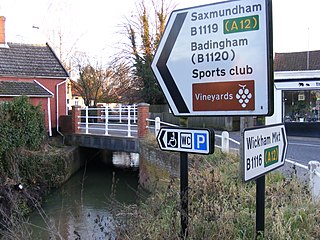 W
WThe Traffic Signs Regulations and General Directions is the law that sets out the design and conditions of use of official traffic signs that can be lawfully placed on or near roads in Great Britain and the Isle of Man. The regulations were the result of the review of British road signage carried out by the Worboys Committee.
 W
WA traffic stop, commonly referred to as being pulled over, is a temporary detention of a driver of a vehicle by police to investigate a possible crime or minor violation of law.
 W
WA traffic ticket is a notice issued by a law enforcement official to a motorist or other road user, indicating that the user has violated traffic laws. Traffic tickets generally come in two forms, citing a moving violation, such as exceeding the speed limit, or a non-moving violation, such as a parking violation, with the ticket also being referred to as a parking citation, or parking ticket.
 W
WThe Convention on Road Signs and Signals, commonly known as the Vienna Convention on Road Signs and Signals, is a multilateral treaty designed to increase road safety and aid international road traffic by standardising the signing system for road traffic in use internationally.
 W
WThe Convention on Road Traffic, commonly known as the Vienna Convention on Road Traffic, is an international treaty designed to facilitate international road traffic and to increase road safety by establishing standard traffic rules among the contracting parties. The convention was agreed upon at the United Nations Economic and Social Council's Conference on Road Traffic and concluded in Vienna on 8 November 1968. It came into force on 21 May 1977. This conference also produced the Convention on Road Signs and Signals. The Convention had amendments on 3 September 1993 and 28 March 2006. There is a European Agreement supplementing the Convention on Road Traffic (1968), which was concluded in Geneva, on 1 May 1971.
 W
WWrong-way driving (WWD), also known as counterflow driving, is the act of driving a motor vehicle against the direction of traffic. It can occur on either one- or two-way roads, as well as in parking lots and parking garages, and may be due to driver inattention or impairment, or because of insufficient or confusing road markings or signage, or a driver from a right-hand traffic country being unaccustomed to driving in a left-hand traffic country, and vice versa. People intentionally drive in the wrong direction because they missed an exit, for thrill-seeking, or as a shortcut.
 W
WZona a traffico limitato (ZTL) is a restricted traffic area in Italy. There are around 200 schemes that are enforced with cameras, plus 100 low emission zones. They help protect historic city centres from excessive traffic, which would otherwise make the city less attractive. The low emission zones also help reduce pollution, particularly in the north Italian regions which have very high concentrations of fine particulates (PM10).